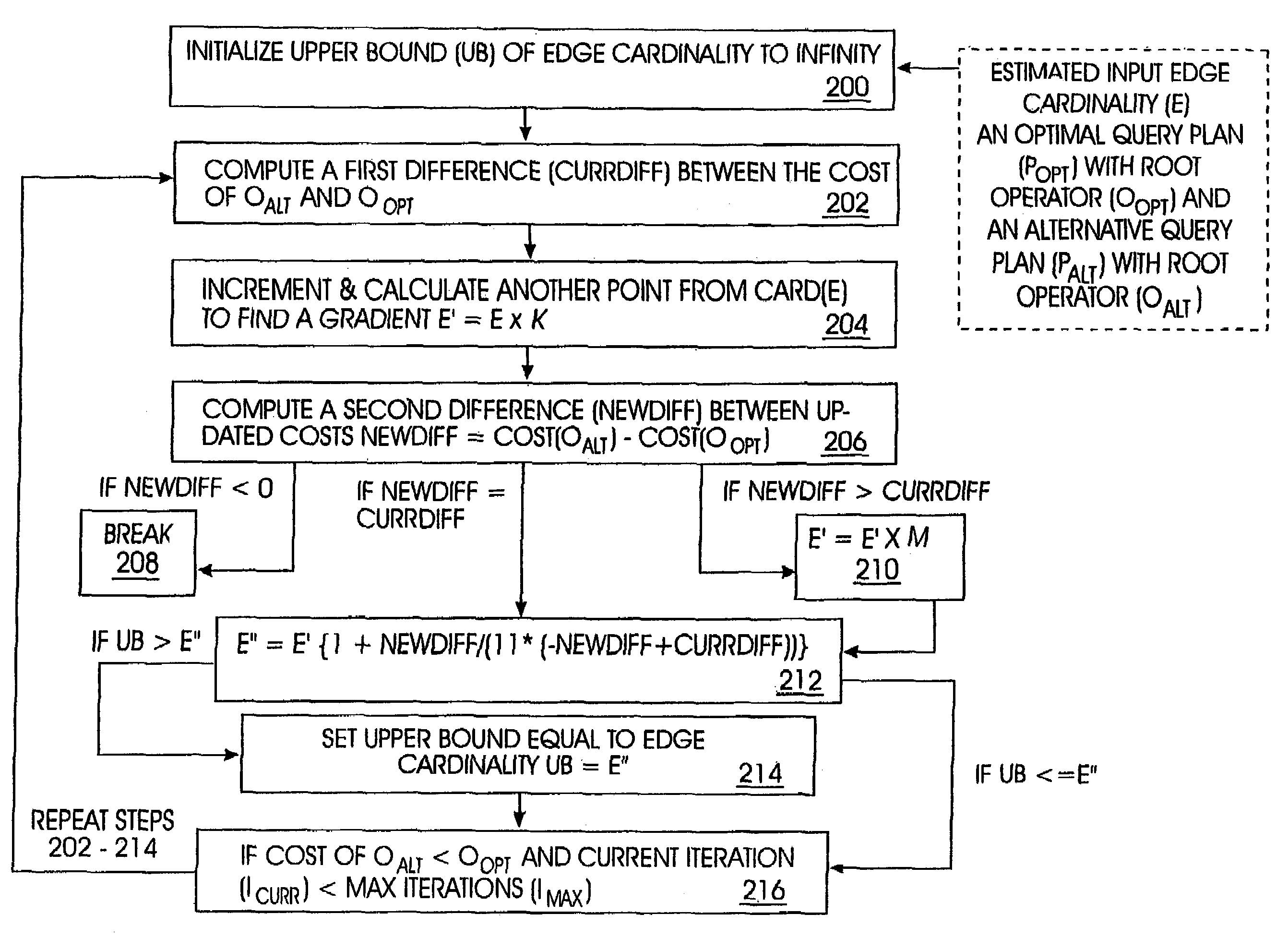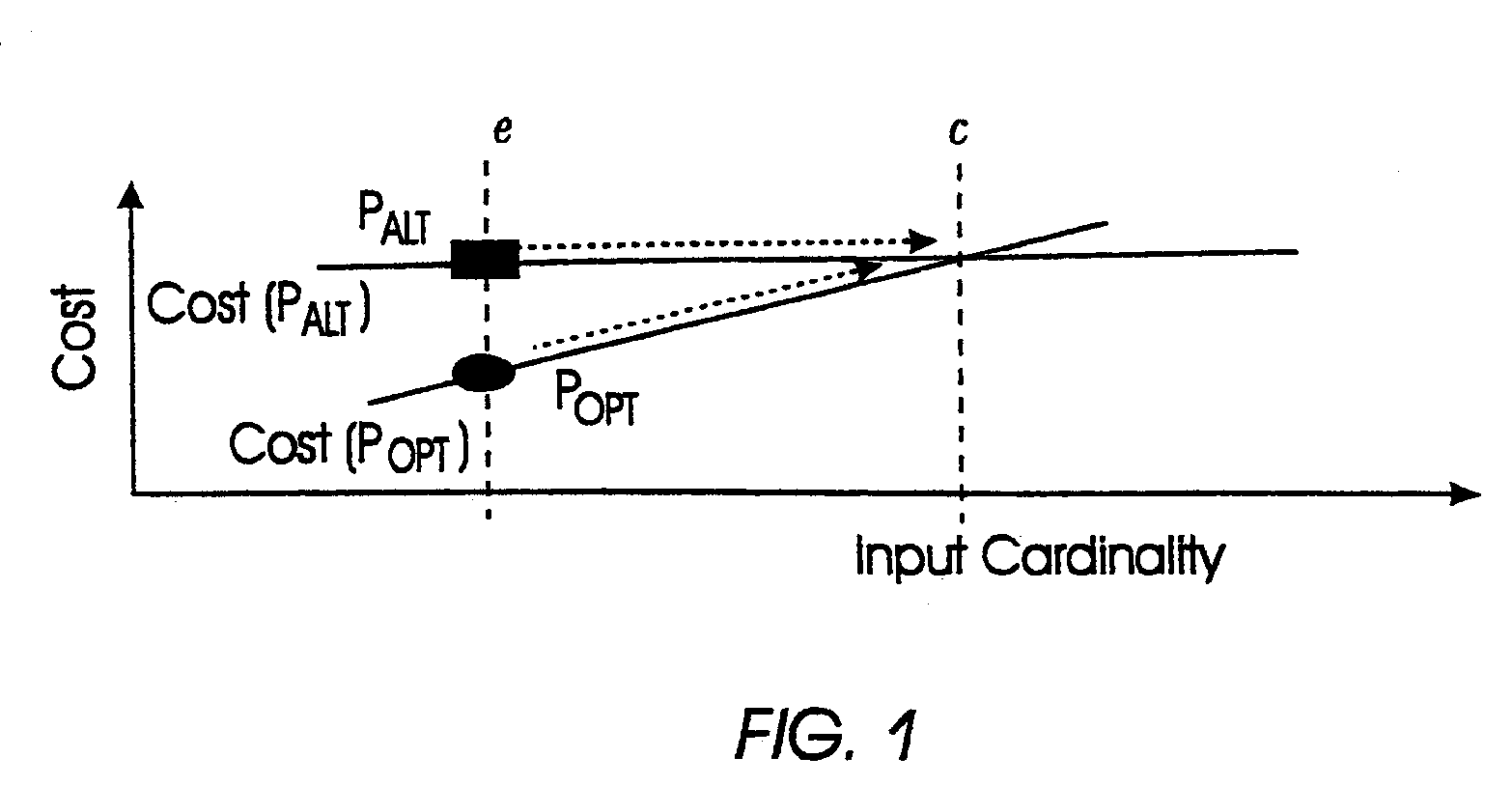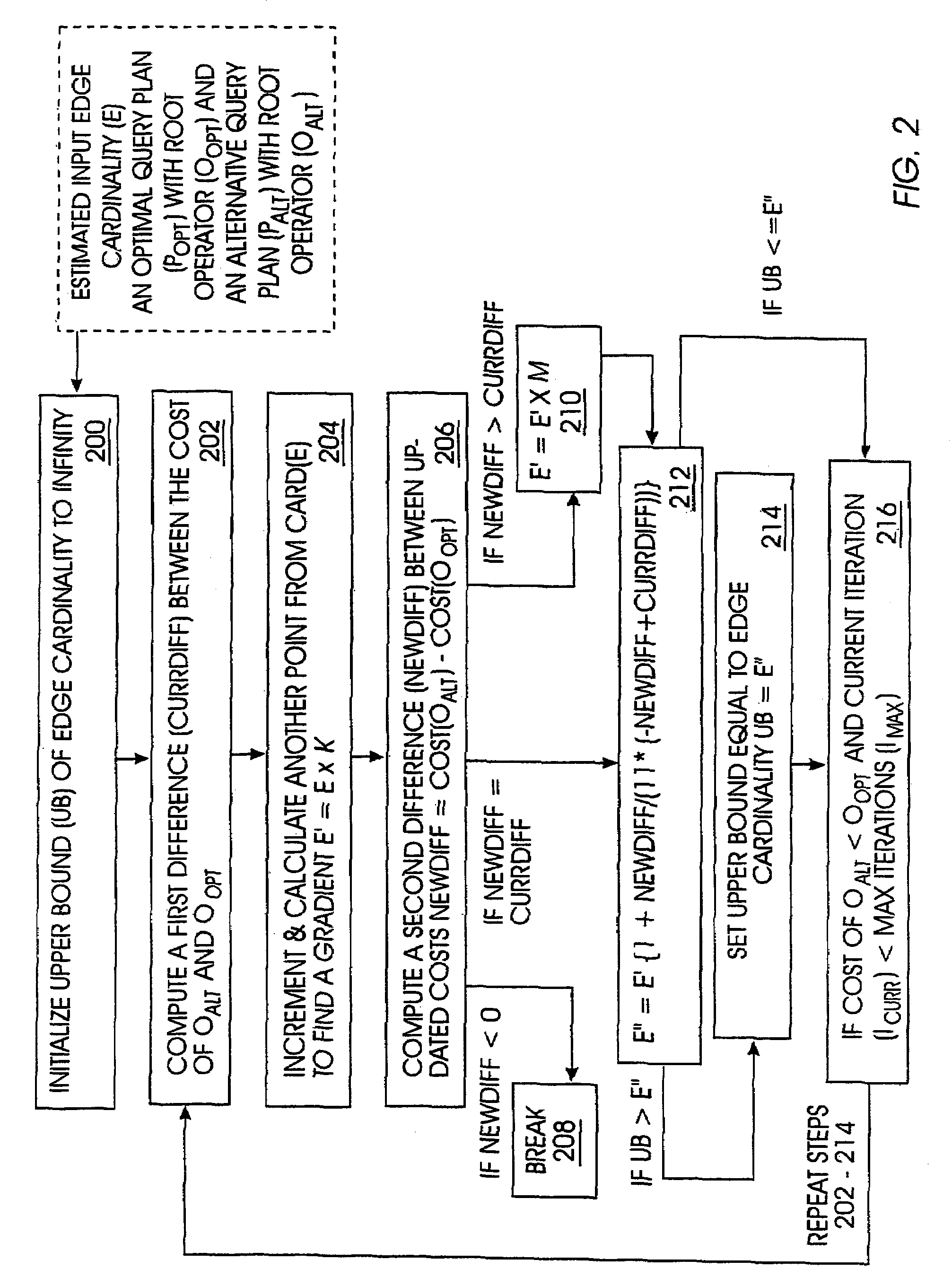Determining validity ranges of query plans based on suboptimality
a query execution strategy and validity range technology, applied in the field of query execution strategy optimization, can solve the problems of significant errors in the estimation of the execution cost of a query plan, and the inability to meet the validity ranges of query cardinality estimates, so as to improve the robustness of the pop model, optimize robustness, and overcome the unsuitability of ad hoc validity thresholds.
- Summary
- Abstract
- Description
- Claims
- Application Information
AI Technical Summary
Benefits of technology
Problems solved by technology
Method used
Image
Examples
Embodiment Construction
[0025]While this invention is illustrated and described in a preferred embodiment, the invention may be produced in many different configurations. There is depicted in the drawings, and will herein be described in detail, a preferred embodiment of the invention, with the understanding that the present disclosure is to be considered as an exemplification of the principles of the invention and the associated functional specifications for its construction and is not intended to limit the invention to the embodiment illustrated. Those skilled in the art will envision many other possible variations within the scope of the present invention.
[0026]In executing a query against a relational database, a query plan is formulated comprising a graph of query plan operators connected by directed edges. During query execution, each edge d provides a set of rows to an operator o in a given query plan. The cardinality of the set of rows provided by d is dependent on predicates and operands upon whic...
PUM
 Login to View More
Login to View More Abstract
Description
Claims
Application Information
 Login to View More
Login to View More - R&D
- Intellectual Property
- Life Sciences
- Materials
- Tech Scout
- Unparalleled Data Quality
- Higher Quality Content
- 60% Fewer Hallucinations
Browse by: Latest US Patents, China's latest patents, Technical Efficacy Thesaurus, Application Domain, Technology Topic, Popular Technical Reports.
© 2025 PatSnap. All rights reserved.Legal|Privacy policy|Modern Slavery Act Transparency Statement|Sitemap|About US| Contact US: help@patsnap.com



